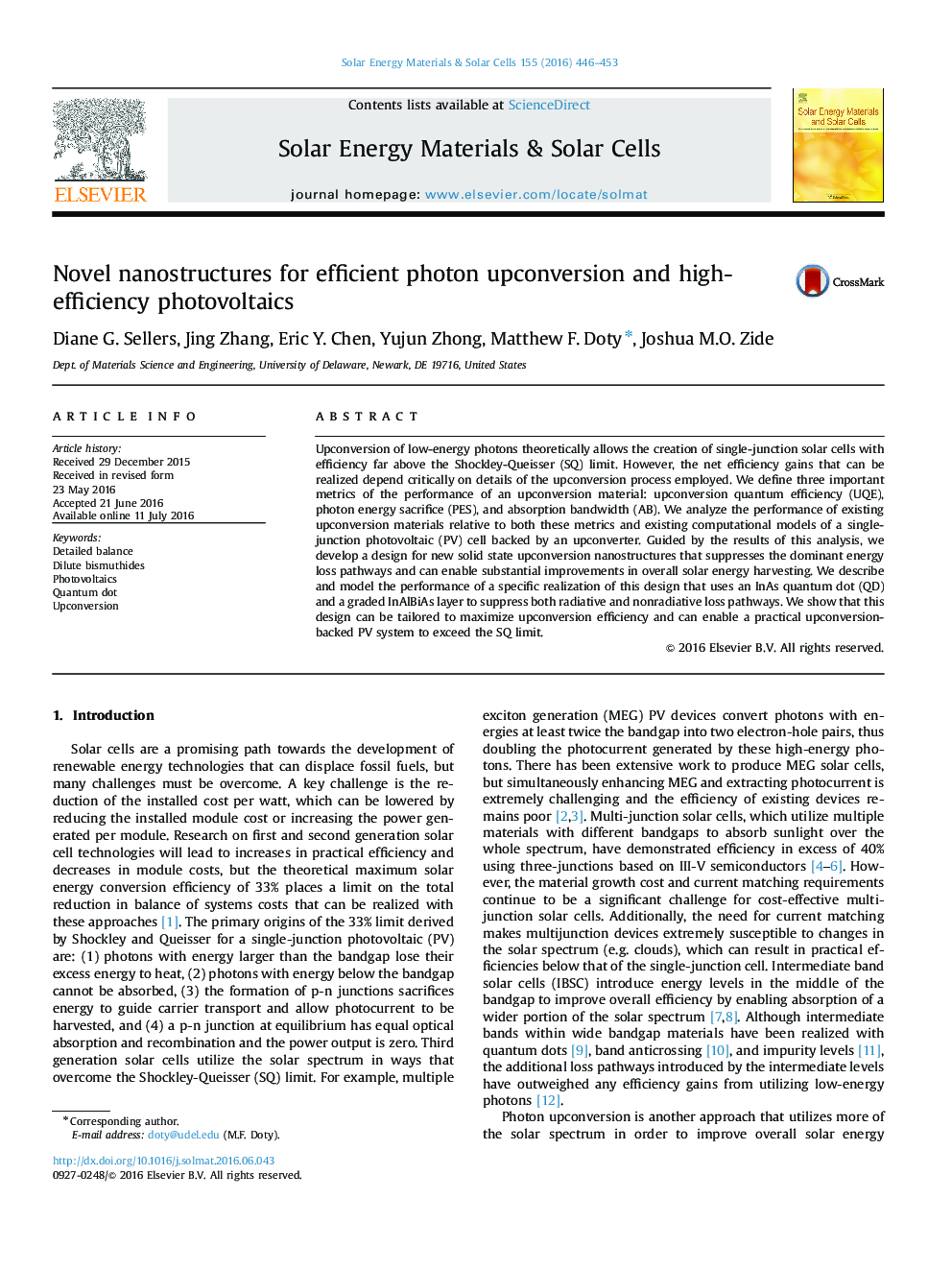| Article ID | Journal | Published Year | Pages | File Type |
|---|---|---|---|---|
| 77533 | Solar Energy Materials and Solar Cells | 2016 | 8 Pages |
•Present a computational model for evaluating realistic photon upconversion materials.•Analyze and compare the potential impact of upconversion materials.•Introduce a new paradigm for upconversion in solid state nanostructures.•Provide a detailed design for a nanostructure implementing the new paradigm.
Upconversion of low-energy photons theoretically allows the creation of single-junction solar cells with efficiency far above the Shockley-Queisser (SQ) limit. However, the net efficiency gains that can be realized depend critically on details of the upconversion process employed. We define three important metrics of the performance of an upconversion material: upconversion quantum efficiency (UQE), photon energy sacrifice (PES), and absorption bandwidth (AB). We analyze the performance of existing upconversion materials relative to both these metrics and existing computational models of a single-junction photovoltaic (PV) cell backed by an upconverter. Guided by the results of this analysis, we develop a design for new solid state upconversion nanostructures that suppresses the dominant energy loss pathways and can enable substantial improvements in overall solar energy harvesting. We describe and model the performance of a specific realization of this design that uses an InAs quantum dot (QD) and a graded InAlBiAs layer to suppress both radiative and nonradiative loss pathways. We show that this design can be tailored to maximize upconversion efficiency and can enable a practical upconversion-backed PV system to exceed the SQ limit.
